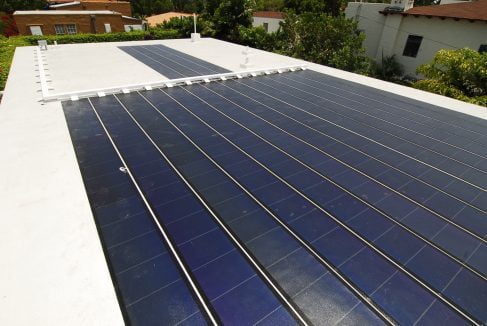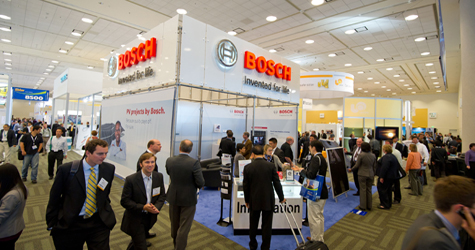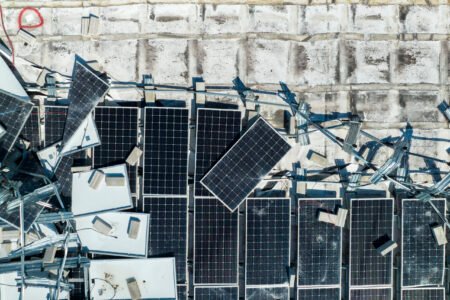The overwhelming majority of photovoltaic installations world wide are equipped with solar cells made of crystalline silicon. That could change in the future, according to results of an analysis by the Zentrum für Sonnenenergie- und Wasserstoff-Forschung (ZSW) and the Helmholtz-Zentrum Berlin für Materialien and Energy (HZB) along with international partners from research and industry. Progress in copper-indium-gallium-sulfide (CIGS) thin-film technology is making this possible: the most advanced alternative to silicon with the highest efficiency is becoming increasingly efficient and cost-effective. In addition, CIGS’ higher yield for weak lighting conditions and shadow as well as visually attractive installation options are advantageous. The timing for companies to expand production capacities is said to be especially favourable, according to the authors. This could open up major opportunities for the solar industry in Europe.
The numbers are impressive: 52 gigawatts of new solar power capacity were installed world wide in 2015 – a new record. In total, the global installed capacity amounts to at least 220 gigawatts. Annual demand is expected to reach more than 100 gigawatts in the coming years and excess capacity will diminish. That will soon make new solar cell factories necessary.
Efficiency levels and costs are approaching those of silicon PV
With an overwhelming market share of over 90%, crystalline silicon PV still remains the top dog of photovoltaic technologies. But progress in thin-film photovoltaics based on copper-indium-gallium-selenide (CIGS) has been noticeable. With the appearance of comprehensive turn-key production facilities for mass production at gigawatt scales, current records are tumbling.
And while polycrystalline silicon cells attain efficiency levels of 21.3 per cent, CIGS solar cells have in the meantime already reached 22.3 per cent. The efficiency of modules is still slightly better for silicon PV, but both technologies are nearly equal at 15-17 per cent. Meanwhile, production costs of the CIGS modules have since fallen to the level of silicon technology – 40 cents US per watt.
Since production capacity of the youthful thin-film PV tech is still not as high as its mature competitor, considerably improved numbers could be expected following expansion of its production. Efficiency levels of 18 per cent or more as well as costs of about 25 cents US per watt are attainable for CIGS PV factories with an annual capacity of 500-1000 megawatts, according to industry representatives among the authors. Competitive costs are reached even at comparatively low production volumes, in contrast to silicon PV. This means considerably lower initial capital expenditures for investors.
Competition to polycrystalline silicon modules is becoming stiffer
Moreover, thin-film technology possesses engineering advantages: the modules deliver high yields under weak lighting conditions. The lower energy and materials consumption during manufacture results in a shorter period of time for an installation to produce the energy its manufacture consumed (the amortisation or payback period) because less energy is used in manufacturing the modules. The higher shadow tolerance is also a positive feature for installation owners. And because the modules appear visually homogenous, they can be integrated in a more attractive manner on roofs or façades of homes. Flexible and configurable versions are also being developed that can score points with the high efficiency of CIGS.
“Solar power modules based on silicon will still own the major share of the market for a while yet”, says ZSW board member Professor Michael Powalla. “The prospects for CIGS thin-film photovoltaics have recently risen again though.” Now would be an opportunity particularly for module manufacturers and for facilities and mechanical engineering firms in Germany and Europe.
The new information has been compiled by an alliance of 25 CIGS experts from all over the world together with Michael Powalla and his colleague Dr. Rutger Schlatmann from the HZB together and published as a white paper. The comprehensive four-page English document is available for download at www.cigs-pv.net.
The Centre for Solar Energy and Hydrogen Research Baden-Württemberg (ZSW) is one of the leading institutes for applied research in the areas of photovoltaics, renewable fuels, battery technology, and fuel cells as well as energy system analysis. ZSW employs about 230 scientists, engineers, and technicians at its three locations in Stuttgart, Ulm, and Widderstall, Germany, in addition to 70 scientific aids and students.
The Helmholtz-Zentrum Berlin für Materialien und Energie (HZB) conducts research on complex systems of materials, helping meet challenges like the energy transition. One of the research priorities is the field of energy materials, those based on thin-film technologies in particular. The HZB is a member of the Helmholtz Association and founded the Competence Centre for Photovoltaics (PVcomB) to promote technology transfer to industry.
Press Contacts
Claudia Brusdeylins, Zentrum für Sonnenenergie- und
Wasserstoff-Forschung Baden-Württemberg (ZSW), Industriestr. 6,
70565 Stuttgart, Germany. Tel. +49 (0)711 7870-278, Fax +49 (0)711 7870-230,
claudia.brusdeylins@zsw-bw.de, www.zsw-bw.de
Antonia Rötger, Helmholtz-Zentrum Berlin für Materialien und Energie (HZB),
Hahn-Meitner-Platz 1 (previously Glienicker Str. 100), 14109
Berlin, Tel +49 (0)30 8062-43733, Fax +49 (0)30 8062-42998,
antonia.roetger@helmholtz-berlin.de, www.helmholtz-berlin.de
Axel Vartmann, PR-Agentur Solar Consulting GmbH,
Emmy-Noether-Str. 2, 79110 Freiburg,
Tel.: +49 (0)761 380968-23, Fax: +49 (0)761 380968-11,
vartmann@solar-consulting.de, www.solar-consulting.de










